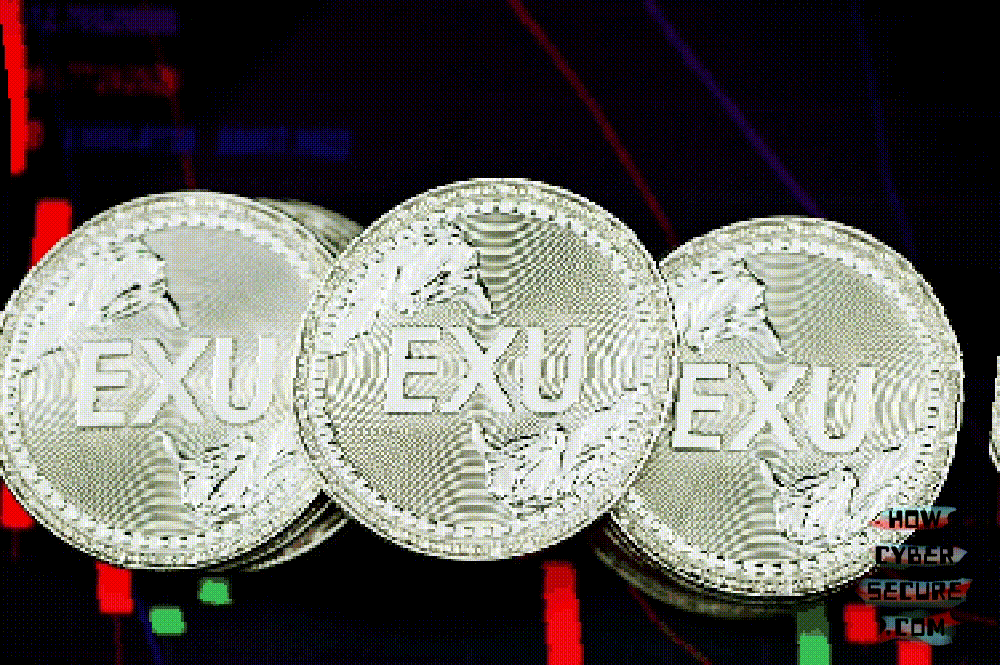Top 5 Crypto Innovations That Will Blow Your Mind (And Wallet) 🤯
by Team

Cryptocurrency is not just a fad, it’s the future of money. And if you think you’ve seen it all, think again. There are some amazing crypto innovations that are happening right now that will change the way we transact, invest, and interact with each other. Here are the top 5 crypto innovations that will blow your mind (and wallet) in the near future.
1. Decentralized Finance (DeFi)
DeFi is short for decentralized finance, which is a fancy way of saying that you can do all kinds of financial stuff without relying on intermediaries like banks, brokers, or governments. With DeFi, you can lend, borrow, trade, save, and earn interest on your crypto assets using smart contracts and protocols that run on the blockchain. DeFi is like a Lego set for finance: you can mix and match different building blocks to create your own customized financial products and services.
DeFi is already a huge market, with over $100 billion locked in various DeFi platforms. Some of the most popular DeFi applications include:
- Uniswap: A decentralized exchange that allows you to swap any two tokens without intermediaries or fees.
- MakerDAO: A decentralized lending platform that lets you borrow stablecoins (crypto pegged to fiat currencies) by locking up your crypto as collateral.
- Aave: A decentralized lending and borrowing protocol that offers flash loans, variable and fixed interest rates, and liquidity mining incentives.
- Compound: A decentralized money market protocol that lets you earn interest on your crypto by supplying or borrowing assets.
- Yearn.finance: A decentralized aggregator that optimizes your yield farming strategies by automatically switching between different DeFi platforms.
DeFi is not without risks, though. There are many factors that can affect the security and performance of DeFi platforms, such as smart contract bugs, hacks, exploits, liquidity issues, regulation, and market volatility. So always do your own research and due diligence before diving into DeFi.
2. Non-Fungible Tokens (NFTs)
NFTs are non-fungible tokens, which means they are unique and cannot be replaced or exchanged with another token of the same kind. NFTs can represent anything digital or physical, such as art, music, videos, games, collectibles, memes, tweets, domain names, real estate, and more. NFTs are stored on the blockchain and can be verified for authenticity and ownership.
NFTs have exploded in popularity in 2021 and 2022, with some NFTs selling for millions of dollars. Some of the most notable NFT sales include:
- Beeple’s Everydays: The First 5000 Days: A digital collage of 5000 daily artworks by the artist Beeple that sold for $69 million at Christie’s auction house.
- CryptoPunks: A collection of 10,000 pixelated characters with different attributes and rarities that sold for over $1 billion in total.
- Bored Ape Yacht Club: A collection of 10,000 randomly generated apes with different traits and accessories that sold for over $600 million in total.
- Axie Infinity: A blockchain-based game where players can breed, battle, and trade cute creatures called Axies that sold for over $2 billion in total.
NFTs are not just about making money, though. They are also about expressing yourself, supporting creators, owning digital assets, and being part of a community. NFTs can also enable new forms of creativity and innovation, such as:
- Metaverse: A virtual world where people can interact with each other and with digital objects using avatars and NFTs.
- DAOs: Decentralized autonomous organizations that are governed by smart contracts and NFT holders who can vote on proposals and decisions.
- Social Tokens: Tokens that represent the value of a creator or a community and can be used to access exclusive content or benefits.
NFTs are not without challenges, though. There are many issues that need to be addressed before NFTs can reach mass adoption, such as scalability, interoperability, usability, environmental impact, intellectual property rights, and regulation. So always be careful and responsible when buying or selling NFTs.
3. Web3
Web3 is the next evolution of the internet that is powered by blockchain and crypto technologies. Web3 aims to create a more open, decentralized, and user-centric web that respects privacy, sovereignty, and freedom. Web3 is not a single platform or protocol, but a collection of technologies and standards that enable new ways of building and using the web.
Some of the key features of Web3 include:
- Peer-to-peer: Web3 enables direct communication and collaboration between users and nodes without intermediaries or gatekeepers.
- Trustless: Web3 enables verification and validation of data and transactions without relying on third parties or authorities.
- Censorship-resistant: Web3 enables resistance to censorship and manipulation by ensuring data integrity and availability.
- Permissionless: Web3 enables anyone to participate and contribute to the network without asking for permission or paying fees.
- Self-sovereign: Web3 enables users to own and control their own data, identity, and assets without intermediaries or custodians.
Some of the examples of Web3 applications include:
- Brave: A web browser that blocks ads and trackers and rewards users with crypto for viewing privacy-respecting ads.
- Unstoppable Domains: A domain name service that allows users to create and own blockchain-based domains that are censorship-resistant and can be used to access decentralized websites.
- IPFS: A peer-to-peer file system that allows users to store and share files on a distributed network without relying on centralized servers.
- Ethereum Name Service (ENS): A decentralized naming system that allows users to create and own human-readable names that can be used to access blockchain addresses, websites, social media profiles, and more.
Web3 is not a utopia, though. There are many trade-offs and challenges that come with Web3, such as complexity, usability, security, scalability, governance, and regulation. So always be aware and critical when using or building Web3 applications.
4. Layer 2 Solutions
Layer 2 solutions are technologies that aim to improve the scalability, speed, and cost of blockchain transactions by moving them off the main chain (layer 1) and onto a second layer (layer 2) that runs on top of it. Layer 2 solutions use various techniques to achieve this, such as:
- Sidechains: Separate blockchains that are connected to the main chain via a two-way peg that allows assets to be transferred between them.
- Plasma: A framework that allows creating child chains that periodically commit their state to the main chain via a smart contract.
- State Channels: A method that allows users to open a channel between them and exchange transactions off-chain until they decide to close the channel and settle on the main chain.
- Rollups: A technique that aggregates multiple transactions into a single transaction that is verified on the main chain using cryptographic proofs.
Layer 2 solutions are essential for scaling blockchain networks and enabling mass adoption of crypto applications. Some of the most popular layer 2 solutions include:
- Polygon: A platform that offers various scaling solutions for Ethereum, such as sidechains, plasma chains, zk-rollups, and optimistic rollups.
- Arbitrum: A platform that offers optimistic rollups for Ethereum, which use fraud proofs to ensure security and enable low-cost and high-throughput transactions.
- Optimism: A platform that offers optimistic rollups for Ethereum, which use fraud proofs to ensure security and enable low-cost and high-throughput transactions.
- zkSync: A platform that offers zk-rollups for Ethereum, which use zero-knowledge proofs to ensure security and enable low-cost and high-throughput transactions.
Layer 2 solutions are not perfect, though. There are some trade-offs and risks involved with layer 2 solutions, such as:
- Security: Layer 2 solutions rely on different assumptions and mechanisms than layer 1 solutions, which may introduce new attack vectors or vulnerabilities.
- Interoperability: Layer 2 solutions may have limited compatibility or communication with other layer 2 solutions or layer 1 solutions, which may affect user experience or functionality.
- Liquidity: Layer 2 solutions may have lower liquidity than layer 1 solutions due to fragmentation or lockup of assets across different layers or platforms.
- User Experience: Layer 2 solutions may have different user interfaces or requirements than layer 1 solutions, such as depositing or withdrawing assets, managing keys or wallets, or verifying transactions.
So always do your homework and understand the pros and cons of each layer 2 solution before using or investing in them.
5. Central Bank Digital Currencies (CBDCs)
CBDCs are digital currencies issued by central banks that are backed by fiat currencies. CBDCs aim to modernize the existing monetary system by leveraging blockchain and crypto technologies to enable faster, cheaper, and more efficient payments and settlements. CBDCs also aim to enhance financial inclusion, stability, and transparency by providing access to digital money to everyone, regardless of their location, banking status, or income level.
CBDCs are not the same as cryptocurrencies, though. CBDCs are centralized and controlled by the issuing authority, while cryptocurrencies are decentralized and governed by consensus rules. CBDCs are also pegged to the value of the fiat currency they represent, while cryptocurrencies have their own market value that fluctuates based on supply and demand.
Many countries are exploring or developing CBDCs, such as China, Sweden, Bahamas, Japan, and Canada. Some of the potential benefits of CBDCs include:
- Innovation: CBDCs could enable new forms of payment and financial services that are faster, cheaper, and more convenient than existing ones.
- Inclusion: CBDCs could provide access to digital money to the unbanked or underbanked populations that lack access to traditional financial services.
- Efficiency: CBDCs could reduce transaction costs and frictions in the payment system and improve cross-border payments and remittances.
- Stability: CBDCs could enhance the resilience and security of the payment system and reduce the risks of financial crises or shocks.
- Transparency: CBDCs could improve the traceability and accountability of money flows and transactions and support anti-money laundering and tax compliance efforts.
CBDCs are not a panacea, though. There are some challenges and risks involved with CBDCs, such as:
- Privacy: CBDCs could pose a threat to the privacy and anonymity of users and transactions if they are not designed with adequate safeguards or protections.
- Security: CBDCs could be vulnerable to cyberattacks or theft if they are not secured with robust encryption or authentication mechanisms.
- Disintermediation: CBDCs could reduce the role and profitability of commercial banks and other financial intermediaries if they compete with or replace their services.
- Monetary Policy: CBDCs could affect the transmission and effectiveness of monetary policy if they alter the demand for money or influence interest rates or inflation expectations.
- Sovereignty: CBDCs could affect the sovereignty and autonomy of nations if they are influenced by external factors or actors or if they create geopolitical tensions or conflicts.
So always be cautious and informed when using or investing in CBDCs.
That’s it for this blog post. I hope you enjoyed reading it and learned something new about crypto innovations. If you did, please share it with your friends and leave a comment below. And don’t forget to subscribe to my newsletter for more awesome content like this. Until next time, stay curious and stay crypto! 😎
Related Posts:
Spread the loveCryptocurrency is not just a fad, it’s the future of money. And if you think you’ve seen it all, think again. There are some amazing crypto innovations that are happening right now that will change the way we transact, invest, and interact with each other. Here are the top 5 crypto innovations that…
Recent Posts
- CyberNative.AI: The Future of AI Social Networking and Cybersecurity
- CyberNative.AI: The Future of Social Networking is Here!
- The Future of Cyber Security: A Reaction to CyberNative.AI’s Insightful Article
- Grave dancing on the cryptocurrency market. (See? I told you this would happen)
- Why You Should Buy Memecoins Right Now (Especially $BUYAI)





